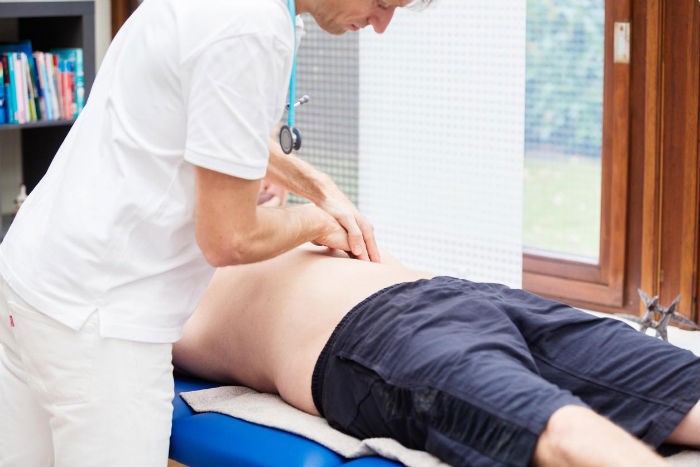
What is dolichosigma? Causes, diagnosis and treatment of the condition
Dolichosigma: this unpleasant disease brings many problems, and if it is not treated, the consequences are also severe
What is dolichosigma?
In adults, intestinal dolichosigma is diagnosed quite often.
This condition is usually congenital, but it could be an acquired defect.
In some cases, this disease does not bring any problem or inconvenience to the patient.
This pathology consists of an abnormal elongation of the sigmoid colon.
The diameter of the lumen and the thickness of its walls are absolutely normal.
But the conventional tissues are replaced by connective cells.
In addition, the intestinal walls are filled with a specific fluid, against the background of which innervation disturbances occur.
Dolichosigmoid increases the length not only of the sigmoid colon, but also of its mesentery.
This phenomenon leads to impaired motility and bowel movements.
The condition manifests itself as regular constipation, recurrent pain in the abdomen and flatulence.
Mechanism of dolichosigma development
There are a total of three stages in the development of the condition:
- Compensated. At this stage, the patient has no pronounced signs of a compensatory mechanism in the body. In some cases, patients complain of problems in the form of constipation, which may last up to 5 days.
- Subcompensatory. At this stage, constipation becomes permanent. Due to this, there is swelling and pain in the area near the umbilicus. In such conditions, even laxative drugs may be ineffective.
- Decompensated. The final stage of the disease, in which the duration of constipation exceeds one week. In such conditions an intestinal obstruction is formed, due to which there is intoxication of the entire organism.
Causes of congenital dolichosigma
Although we know what intestinal dolichosigma is, it is not so easy to discover the initial prerequisites for its development.
Even the specialists involved in studying the disease cannot say with certainty about the causes of this defect.
We can only say that dolichosigma is either congenital or acquired.
The first type is most often found in young children, and its parents can recognise it even in the first days of the child’s life.
Causes of acquired dolichosigma
This form of the disease is diagnosed much less frequently.
It is usually detected at the age of about 45.
The reasons for the development of acquired dolichosigma are the following factors
- inactive lifestyle
- abuse of fatty food or food containing large amounts of carbohydrates;
- digestive disorders;
- regular stress
Dolichosigma symptoms
In adults, this disease causes pain in the abdominal region without a specific location.
In addition to pain, signs of dolichosigma are:
- bloating;
- flatulence;
- dry stools;
- rumbling and gurgling in the stomach;
- prolonged constipation – emptying occurs less than three times a week;
- loss of appetite;
- drops of blood in stools;
- white bloom on tongue;
- severe hair loss;
- unpleasant smell of stools;
- scarring changes of sigma;
- faecalomas;
- bad breath
Diagnosis:
On palpation, a specialist reveals an intestinal overflow with faecal masses.
Visually, the doctor may also pay attention to pallor of integument, excessive thinness, developmental disabilities in children.
They are also used for the diagnosis of dolichosigmoid:
- stool analysis;
- colonoscopy;
- coprogram;
- abdominal ultrasound;
- x-rays;
- blood tests;
- sigmoidoscopy.
Treatment of intestinal dolichosigma in adults
A prerequisite for successful treatment of this disease is adherence to a special diet.
A patient with this diagnosis should be advised to eat foods rich in fibre and vegetable oils.
The dolichosigmoid diet also excludes alcoholic beverages and all types of foods that cause constipation.
These include, for example, boiled potatoes, semolina, pasta, bread, tinned meat, biscuits.
The diet of patients with dolichosigmoid should contain the maximum amount of minerals, vitamins and fibre.
The latter element is not particularly well digested, but in return facilitates the movement of other products.
In addition, cellulose makes stools soft, prevents constipation and stimulates intestinal activity.
A large number of such an important element can be found in:
- green onions;
- bananas;
- pumpkin;
- carrots;
- cabbage;
- grapes;
- tomatoes;
- green apples;
- cucumbers;
- kiwi;
- pineapples;
- pears.
An obligatory component of the diet for people with large intestine is cereals made from natural whole grains.
To prevent constipation, you can add a little olive or vegetable oil to porridge or other dishes.
In order to recover as quickly as possible, products with colouring agents, preservatives and biological additives should be completely abandoned.
All these elements worsen the disease.
It is strictly forbidden to eat:
- various fatty cakes;
- cocoa;
- all types of carbonated drinks;
- crackers;
- smoked meat;
- tea;
- spicy spices;
- fatty dishes
- spicy sauces;
- products with an excessively long shelf life.
Standard treatment for intestinal dolichosigmoid in adults includes:
- following an appropriate diet;
- if necessary, surgery;
- belly massage;
- taking laxatives;
- use of vitamin complexes.
Conservative therapy
The medicines used are
- antispasmodics – eliminate spastic pain – “Platyphyllin” and “Drotaverin”;
- Pro and prebiotics – stabilise the intestinal microflora – “Bifidumbakterin” and “Linex”;
- B vitamins – suppress signs of avitaminosis;
- injections “Prozerin” and “Dibazol” – are used for hypotension of the digestive passage;
- laxatives – helps to get rid of constipation in the long term – “Lactulose” and “Lactusan”.
Almost always, people with a diagnosis of “dolichosigma” are prescribed the following drugs:
- “Festal”.
- “Mukofalk”.
- “Motilium”.
- “Dibazol”.
- “Psyllium”.
- “Duspatalin”.
- “Linex”.
- “Neostigmine”.
- “Narine”.
Drug therapy for bowel distension usually includes:
- enemas with the addition of plant-based medicines;
- anti-bulking agents;
- laxatives;
- prokinetics.
Operative intervention for dolichosigma:
Operation is considered a radical method of treating the disease, so dolichosigma in adults is very rarely used. Most often, indications for surgery are such signs as:
- persistent constipation;
- intestinal obstruction;
- bowel loops that cannot be straightened;
- lack of results from conservative treatment;
- progressive faecal intoxication.
If there is such a need, specialists perform sigmoid colon resection.
The disease can also be eliminated in another way, with the help of proctosigmoidectomy.
This alternative operation involves the removal of the sigmoid and rectum.
Diseases resulting from dolichosigma:
For example, often untreated dolichosigma causes the occurrence of:
- anaemia;
- drastic weight loss;
- coloptosis;
- diverticulosis;
- peritonitis;
- irritable bowel syndrome;
- perforation of the intestine;
- faecal intoxication;
- acute intestinal obstruction;
- faecaloma.
Read Also:
Emergency Live Even More…Live: Download The New Free App Of Your Newspaper For IOS And Android
Wales’ Bowel Surgery Death Rate ‘Higher Than Expected’
Irritable Bowel Syndrome (IBS): A Benign Condition To Keep Under Control
Colitis And Irritable Bowel Syndrome: What Is The Difference And How To Distinguish Between Them?
Irritable Bowel Syndrome: The Symptoms It Can Manifest Itself With
Experts Call For Changes To The Way IBS (Irritable Bowel Syndrome) Is Diagnosed
Sources:
The value of peroperative colonic lavage in urgent colonic surgery. Apropos of 54 patients
Surgical treatment of perforations of the sigmoid colon
Treatment of dolichosigmoid and dolichocolon
Dolichosigmoid and dolichocolon in children and their treatment



